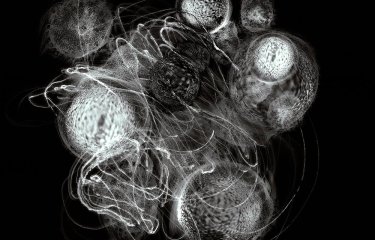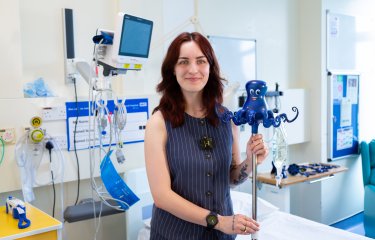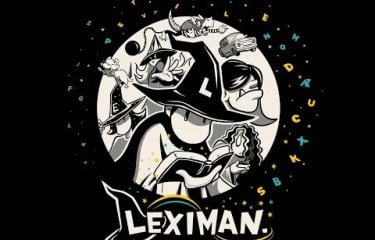Lecturer’s Revolutionary Eco-Friendly Bee Bricks Bought by Prince Charles
13 February 2019
Kate Christman’s award-winning sustainable bee bricks have been hitting the news lately, with clients like Prince Charles spending £55,000 on including them in his new eco-friendly housing development in Newquay.
Kate, Senior Lecturer in Graphic Design and co-founder of Green&Blue, created the revolutionary bee bricks with her husband Gavin, who also comes from a design background. They met while both working for Dyson, then relocated to Cornwall to start their business.
The bricks, which have now been included in Cornwall Council’s Sustainable Planning Document, are designed to house non-aggressive solitary bee species, including sole bees, red mason bees and leaf-cutter bees. These solitary bees do not produce any honey or have a queen to protect, so rarely sting and are safe to encourage around children and animals.
A third of Britain’s native bee population has disappeared over the past ten years; finding creative ways to repopulate the endangered species is crucial for the future of our planet.
“We all have a shared responsibility to leave this world a better place,” Kate told us.
Kate splits her time during the week between working as a Senior Lecturer in Graphic Design and working at Green&Blue; her passion for sustainable design shines in both.
She told us: “I am passionate about Design and how it can be used to create change. Graphic design is multidisciplinary and my professional practice is about problem solving (and using the design process to solve problems). I believe that design can, and should, make a difference, especially from an environmental point of view.”
Explaining how her two roles complement each other, Kate said: “To work in education is a huge privilege and having a design business helps support my teaching in a number of ways, from problem solving to time management to supporting students with practical skills such as working with clients, working with printers and networking. Real world experience is really important to me, as is working collaboratively.”
At Green&Blue, Kate and Gavin say, “We take pride in using a circular economy approach to product development, re-using waste materials in our products and creating employment in Cornwall. We are excited to be launching two new products at Futurebuild in March: our swift and bat boxes, which are also made from 75% waste material from the Cornish China Clay industry.”
Green&Blue work closely with Exeter University and supporters from the Soil Association, the Wildlife Trust and the Eden Project. In November 2018 it became a certified B Corporation.
Kate explained: “Certified B Corporations are businesses that meet the highest standards of verified social and environmental performance, public transparency and legal accountability to balance profit and purpose. B Corps are accelerating a global culture shift to redefine success in business and build a more inclusive and sustainable economy.”
Raising awareness is an important part of the Green&Blue mission, so the recent media coverage and a £55,000 purchase by Prince Charles has been extremely welcome.
Kate told us: “We have worked with the Duchy and the Prince of Wales for a few years now and it is a huge privilege to have high-profile support for our business. Nansledan [the Prince’s eco-friendly housing development in Newquay] is a very exciting project for us and we are thrilled that bee bricks are being included on this site. The media coverage has also been incredible so far this year.”
Her advice for people looking for a more sustainable, eco-friendly life? “Always think about the small things that you can do to create big change. If we all work together, we can make a difference, no one can do it alone.”
To find out more about solitary bees, bee bricks and environmentally friendly solutions, Green&Blue are also taking part in the current Planbee Exhibition at the Eden Project (open until March 2019). This insightful science and contemporary art exhibition presents new views on bees and other native pollinators: their vital role, their extraordinary lives, their plight, and the story of our native dark honey bees and the role they play in our environment.








